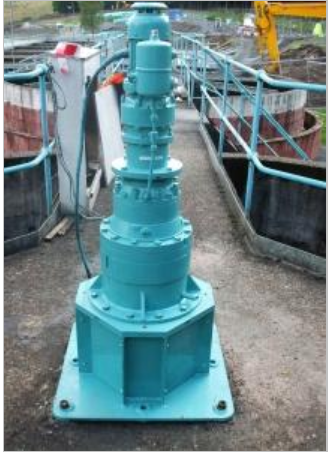Welcome to Sino Bearings web
24x7 HOTLINE:+86-28-81454188

 NEWS
NEWS
Recent energy price rises and a growing awareness of its carbon footprint has prompted Scottish Water to audit the efficiency of the equipment at its Glendevon site.
During a recent service two thickener drives at the Scottish Water sewage treatment works in Glendevon were deemed to be obsolete. The costs of either repairing or replacing the drives would be extremely high as replacing the drives would require lengthy downtime and a repair job would be inefficient.
Brevini, working with Brammer Plc. a provider of industrial services, was able to deliver a no-engineering solution which would fit on the existing structure and provide the plant with high energy efficiency.
Carbon footprint
Recent energy price rises and a growing awareness of its carbon footprint has prompted Scottish Water to audit the efficiency of the equipment at its Glendevon site. During the audit the drives of two thickeners were deemed to be obsolete. The Combidrive double reduction gearboxes provided an output speed of 0.04 to 0.082rpm with an output torque of 9291Nm. The drives produced poor energy efficiency for their output and were in danger of failing.
Due to their size a site will not have a standby for if one fails, if one does go out of commission other thickeners have to take on the extra load.
For this reason it was imperative that a solution was found quickly before the drives became completely redundant. Scottish Water contacted Brammer who were quick to recommend Brevini, a specialist in no-engineering drive solutions for water treatment works.
Typical solutions such as replacement or repair were unfeasible. A complete replacement would involve the re-engineering of the thickener's structure which would be extremely costly and time consuming. Alternatively, repairing the existing drives would be inefficient as it would only provide a temporary solution. As well as initial cost it is important to consider running costs as drives with poor energy efficiency will have an impact on a site's energy consumption, and therefore its bills.
Planetary gearbox specialist Brevini was able to provide an alternative solution which would allow the gearboxes to be replaced with new gearboxes without having to re-engineer the mounting bracket. Brevini is one of the world's foremost manufacturer of planetary gearboxes and engineered planetary geared power transmission solutions. It recognises the importance of providing no-engineering solutions as this reduces costly downtime.
Jon Snaith, MD of Brevini UK Ltd, said: "This particular project had a number of difficulties to over-come.
"Firstly the two drives were supposed to be identical, however on closer examination and measuring it was determined that through age and usage some of the bolt hole patterns and holes had elongated and stretched making the design of the new solution very difficult because we had to make sure the one design would be able to be installed on either tank."
The planetary gearboxes use three planetary gears mounted in two rows of needle bearings, this leads to 98 per cent efficiency per stage. The overall ratio of the planetary gearboxes installed was 17,512:1, they had a continuous torque rating of 13000Nm and a maximum torque rating of 20000Nm. The gearboxes now run at 90.4 per cent efficiency.
Due to the high reduction ratios possible with a planetary gearbox a far smaller motor is needed to power them. This means that a site can run with less energy. The theoretical life expectancy of the gearboxes added at the Glendevon site is in excess of 200000 hours, more than 20 years.
Installing planetary gearboxes provides water treatment sites with a low cost alternative that provides continuous energy savings.
Walter Bryce of Brammer adds: "Brevini and Brammer enjoy a highly professional working relationship, both companies recognise each others expertise which produces a beneficial partnership for the customer.
Like Brammer, Brevini UK Ltd has been working in the water industry for many years and have developed a good reputation. At Glendevon the final solution is technically sound and more compact than the original set up, it will also provide valuable energy savings."